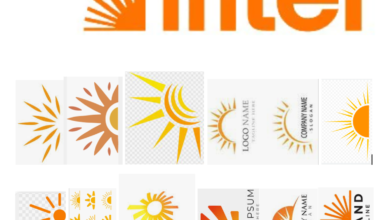[ad_1]
Rebranding has frequently been known to have a negative connotation. It was often a “damage control” band-aid; a quick fix for a business failure. However, in today’s world, new brand identities are becoming increasingly common. A rebrand is now proactive than reactive, and even indicates health and wellness for a brand. In fact, the strongest of brands are more dynamic than ever.
Some of the most forward-thinking companies in the world utilize dynamic branding, which lets them freshen up their look and feel without losing their core brand identities. It allows companies to tailor themselves to stay relevant to seasons and holidays, to make cultural statements, and to align themselves with other brands in the landscape. Take IHOP’s recent campaign as a great example of dynamic branding: the company changed their logo and tagline to “IHOB”, which captured viral attention and promoted their new burger line, but still stayed true to their traditional branding and identity.
All brands need a strong, sturdy foundation before they shift. This is where Digital Asset Management (DAM) platforms come in handy. Luke Beatty, CEO of Brandfolder stepped on stage at Denver’s Digital Summit to discuss the rise of dynamic branding and how companies manage their myriad of assets while also strategically evolving their brands. We’ll reveal key takeaways from his presentation and explain how a DAM like Brandfolder can work as a common space between creative development and omnichannel marketing for a dynamic brand.
Why do brands change their identity?
There are three main reasons for a rebrand: to launch new products, generate revenue, or emphasize a company’s positioning and alignment.
Let’s rewind back to our original example of IHOP. Although IHOP is a globally recognizable brand, would customers have noticed if they launched a line of burgers? Probably not. Knowing this, they “rebranded” to IHOB, attracting a ton of internet buzz that shone a massive spotlight on their hamburger line. IHOP simply tweeted announcing the name change, and country-wide speculation began: It led followers to guess whether the “b” would stand for something in the breakfast realm (like breakfast or bacon), or whether it could be joining the blockchain naming trend. It was a brilliant use of viral marketing, and even though it ended up being just a publicity stunt, they nailed it.
The second reason is to generate revenue. One of the most viral and well-executed rebrands came from Old Spice. Prior to 2010, the brand was focused on an older demographic of men. Once the cologne market grew saturated with competition (and as Axe emerged as a market leader), the brand quickly re-launched their identity with humorous campaigns and a newer aesthetic, resulting in younger customers. The witty “The Man Your Man Could Smell Like” ad got 6 million YouTube views in its first week, netting the P&G brand a sales increase of 125% year-on-year in a highly competitive market dominated by Unilever’s Axe.
Lastly, rebranding can also publicize a company’s alignment or positioning. Think Breast Cancer Awareness or LGBT Pride Months — thousands of companies temporarily change their logo to pink or rainbow to show their support for these causes and to communicate the importance of shining light on critical issues. It’s a successful tactic to attract new audiences based off their beliefs or values.
Why is it hard for brands to become dynamic as they grow?
“There are complexities to every single piece of a brand asset that exists in the world,” Luke explains at his keynote at Digital Summit Denver. “There are usage guidelines that need to be adhered to, dates and times that need to be taken into consideration, and other regulations for each individual asset.” In addition, the average Brandfolder customer has a whopping 18 times the creative assets that they had in 2013, which oftentimes results in thousands of assets each with their own specific rules and regulations. Clearly, maintaining a consistent brand is becoming increasingly more difficult, which means flexing and shifting your brand identity also becomes more challenging. A strong brand foundation is necessary for a company to become dynamic so this asset increase can derail that groundwork.
And why is this necessary? A study by McKinsey and Company shows that B2B companies with strong and consistent branding are 20 percent more successful than those that are inconsistent. The bottom line is that brand consistency affects a brand’s bottom line! In addition, you can lose clients’ trust, fade into the background, or become associated with poor quality.
What does it take to deliver a dynamic brand?
To deliver a dynamic brand, a company needs creative capacity, brand consistency, platformed logistics, as well as measurement and insights. Let’s break down what each of these means.
Luke explains why creative capacity is important for dynamic branding: “Let’s say you have two brand identities — your regular brand voice, and then this other brand voice for positioning or campaigns. You’re going to need twice the amount of team members to manage these two brands, and execute them both equally well.” Truly dynamic branding is usually executed by many different teams and requires a larger creative capacity for any organization.
As mentioned before, brand consistency is key to dynamic branding, and DAM platforms are an essential tool for achieving that foundation. A DAM (like Brandfolder) allows users to search for a specific asset and tells users exactly how those assets should be used. By providing this type of regulation, DAMs ensure your company’s assets are being used correctly and consistently — creating more credibility and trust for your brand.
Logistics are also a huge part of building a dynamic brand. Most creatives and their constituencies spend more than 60 hours each year searching for misplaced assets, wasting time digging through disorganized folders or looking through old emails and cloud storage to locate approved creative. Time is no longer a luxury — users need the correct assets in an instant. By utilizing a DAM like Brandfolder, companies no longer waste time searching for approved creative, allowing them to make data-driven decisions with accelerated brand engagement.
Lastly, keeping a close eye on analytics throughout this process is crucial in the evolution of a brand. Use performance data to optimize your branding efforts and make smarter decisions moving forward.
Interested to see where a modern DAM fits into dynamic branding? Download the State of DAM and read how Brandfolder can act as a common space between creative development and the endpoints of omnichannel marketing for a dynamic brand.
Source link






